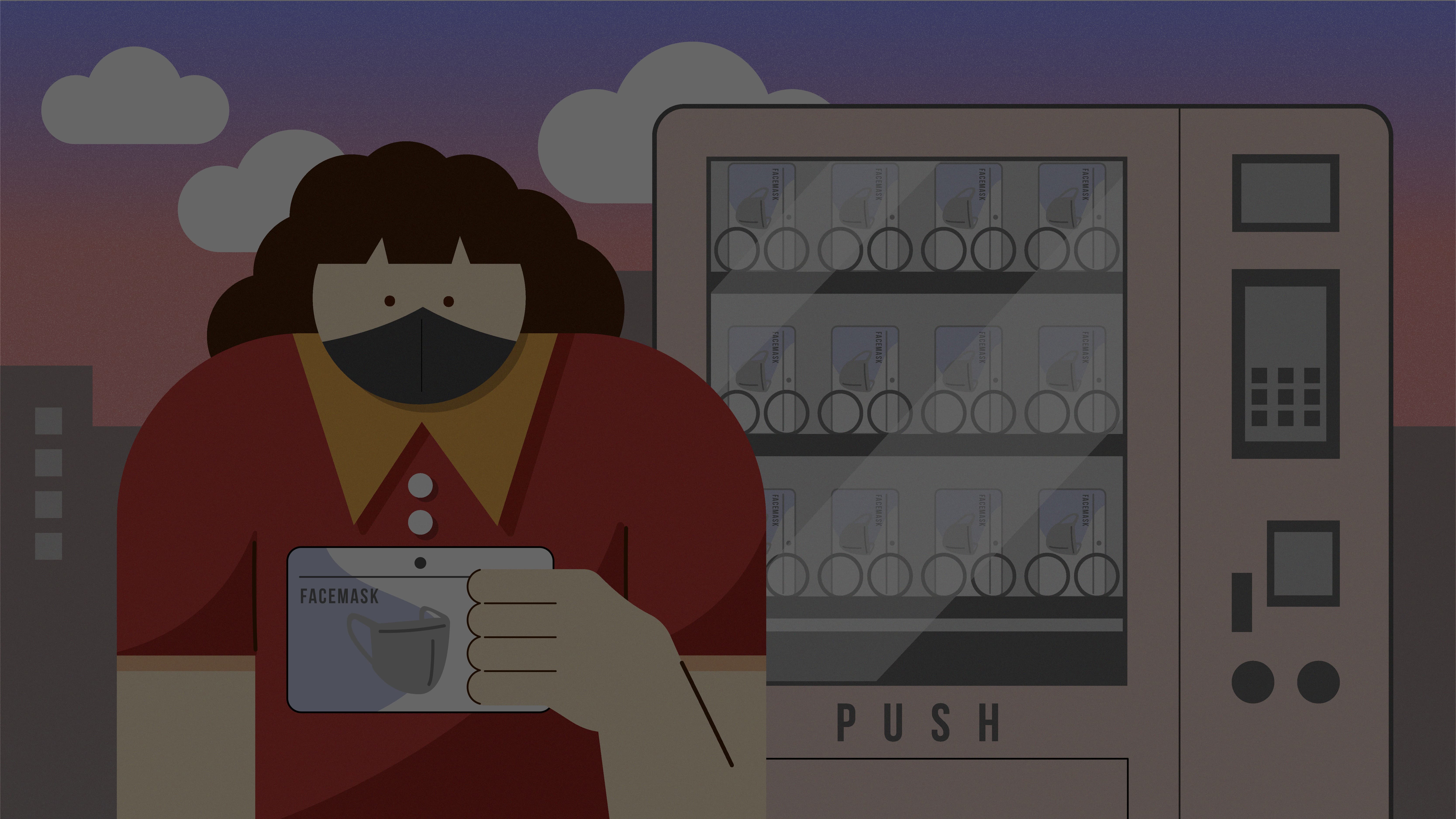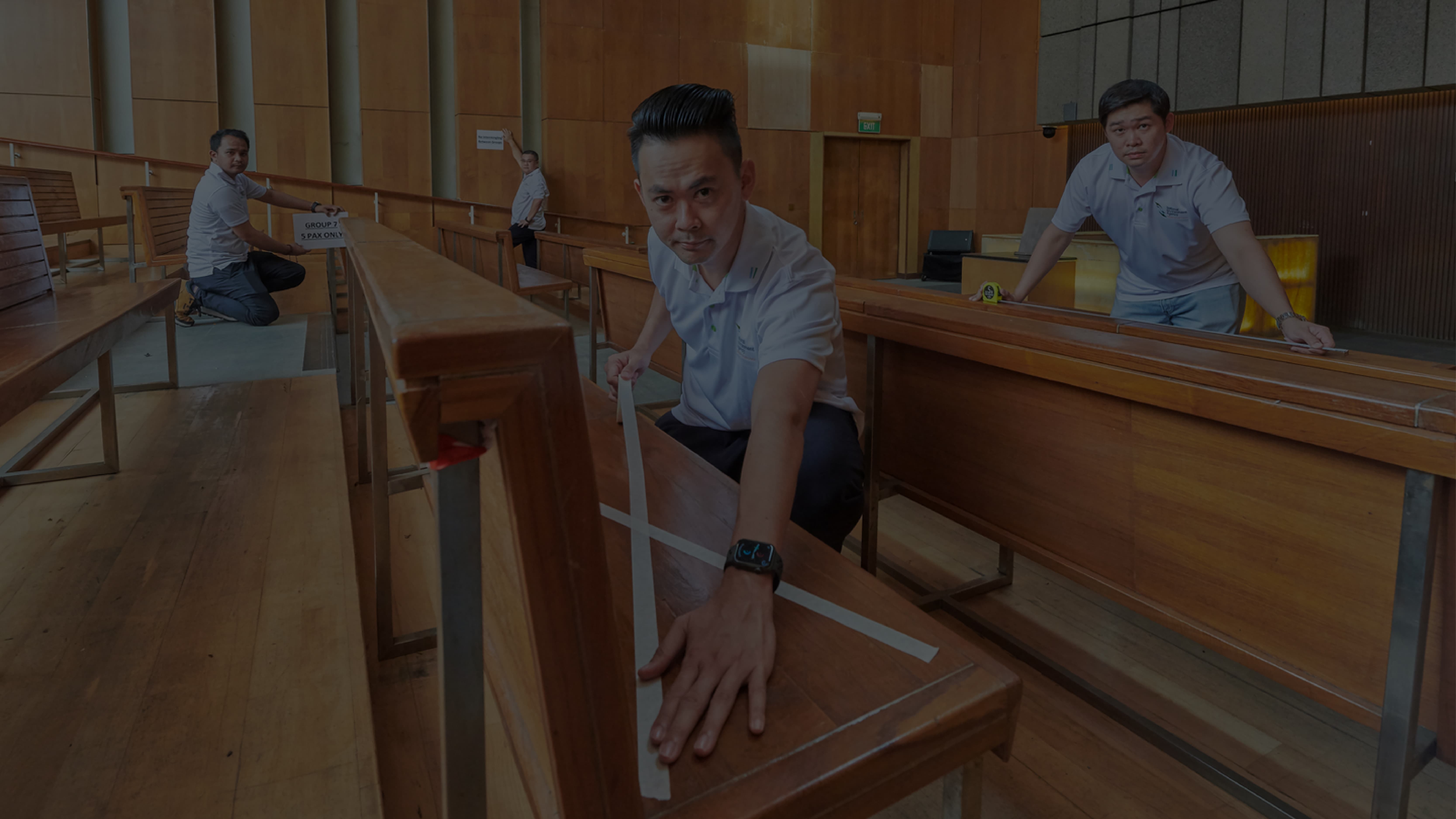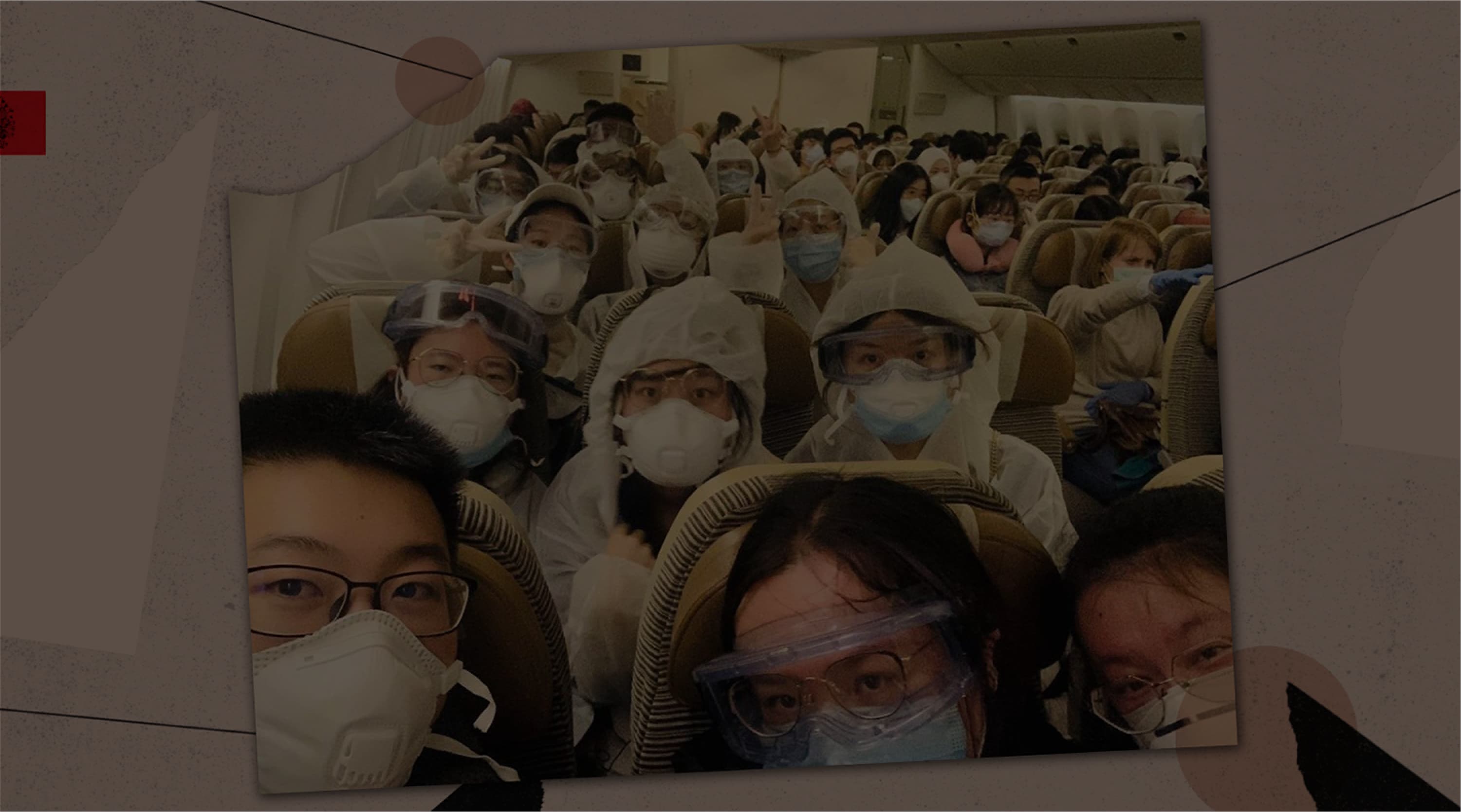Lessons From SARS For Teachers During COVID-19
James Chng, a teacher of almost 30 years at Montfort Junior School, reflects on what’s been learnt since SARS in 2003, and how teachers and students have adapted to virtual learning experiences.
The transcript for the interview done in late 2021 has been edited for length and clarity.

The COVID-19 pandemic has brought mental health issues to the fore. For this season of The Challenge Podcast, we kick things off with a chat with two officers involved in the development of an online mental health resource that seeks to go beyond just dealing with stresses from COVID-19. Transcripts have been edited for clarity and language.
Transcript
Host: Tajuddin Marhim
TAJUDDIN: Welcome to this special edition of the Challenge podcast. I’m your host, Tajuddin Marhim, and I’m a development partner for enterprise services at Enterprise Singapore.
In response to the pandemic, my team and I were tasked to set up the COVID-19 contact centre to address enquiries from businesses and members of the public.
And this edition of the podcast takes a special look at how the Singapore Public Service responded individually and collectively to the COVID-19 pandemic, and the lessons we learnt along the way.
For this series we will be speaking to some officers who have contributed in one way or another to ensure the health and safety of every person in Singapore.
TAJUDDIN: Today we are speaking with educator James Chng from Montfort Junior School. Through the course of his career, he experienced not one, but two public health incidents – SARS in 2003, and COVID-19 today. Challenge finds out how he dealt with each crisis and what he has learnt from them.
James, thanks so much for joining us. Maybe you'd like to give a quick introduction about yourself.
JAMES: Well, I've been in teaching for almost 30 years, and I've been teaching in Montfort Junior School. It’s an all-boys school and a primary school as well. In fact, I've been a student of Montfort. Going back to my alma mater is really something that I looked forward to, I was blessed to have the experience.
TAJUDDIN: You've been through two public health situations, right? Just a quick throwback: how was it like for you as a teacher back when SARS first hit in 2003?
JAMES: Well, at that point in time, there were no smartphones, or even group chats. So many families do not even have a computer at home, not to mention even an Internet connection.
So the only thing we could do was really to send worksheets to the students when the school had to close at some point in time.
So I remember very distinctly, when term two started, we thought everything would go on as per normal. But then on that Wednesday evening, it was in the news that schools were to close the very next day.
At that point in time, we actually got printed worksheets. And we informed the parents and the students as well. Some parents actually volunteered to come back to school to collect the worksheets. For the rest of them, really the plan then was to mail the packages out.
I thought to myself at that point that, you know, it will take a while for the worksheets to reach my students by post. So I actually sought permission from the principal then, and delivered the worksheets to my students personally. It took me about two and a half days or so to send it to all my 37 students then.
When they returned to school, about three weeks later, we had to activate our teachers to be in school by 6.30am, to make sure that we screen the students coming in and collect declaration forms. And this continued till end of April.
TAJUDDIN: Hearing you mentioning how much effort went in to delivering the worksheets for your students. I think I should have been more grateful to my teachers back then.
But do you think that SARS actually prepared schools, you know, and even teachers for what was to come when COVID-19 actually landed on our shores?
JAMES: Yes, actually it did. So ever since the SARS outbreak, schools actually had been exploring how to teach using various online platforms and for many years, most schools have set aside at least a day or two for e-learning at home. So in Montfort Junior we have actually been encouraged to use ICT and incorporate that into our lesson plans throughout the year. So students actually got a little bit more familiar with the online learning. And we tried different platforms. And eventually in 2018 when the Ministry actually rolled out the students learning space known as the SLS, it helped us.
TAJUDDIN: So James, I think one of the biggest differences is that SARS came and went pretty much in a span of a few months. How would you say your experience – was it similar or different, you know, teaching during these two periods?
JAMES: Well, for a start, when we came back from school closure during the time of SARS, group work carried on, everything more or less went on, as per normal students were allowed to mingle about and so on. The only difference then was that we had to ensure that temperatures were taken on a daily basis, and that we have to make sure that students were all right.
But with COVID-19 it’s very different. When they came back from circuit breaker, we were not allowed to have group work, we have to ensure that students actually sat according to examination style. So a lot of frontal teaching had to be done then. So hands-on activities in groups were minimised. That's one of the main differences, really.
TAJUDDIN: And I think the students back then in 2003, and the students now are definitely a lot different. And I think the technology as well, like what you’d mentioned earlier, previously there wasn’t a unified learning space, as there is now. In your opinion, the advances in technology – has that really helped you guys a lot?
JAMES: Yes, definitely it has. With platforms like Zoom and all that, we are able to engage the students online. And of course, that actually gave us that possibility of seeing one another face-to-face in that sense.
TAJUDDIN: When the circuit breaker hit at the start of it all, as teachers, that must have been a big jolt to quickly move from the physical classroom immediately to home-based learning, even with the technological tools that were available to you. What would you say were your initial concerns?
JAMES: The very first thought that came to my mind then was, oh, the day has finally arrived. We have actually been expecting something like that. So even prior to the circuit breaker, schools have been actually actively preparing ahead in case there should be school closure.
So it didn't exactly come in as a surprise. However, I think for many of us, we still needed to make sure that we are technologically skilled enough to engage the students online.
The learning curve was really very steep. For those of us who aren't really very IT savvy, there was always this fear of getting technical failures, and so on.
I remember going to one of the teachers to ask for help on how I could do screen recording. And of course, with that, I picked that up. The other one that I had to really learn was how to Zoom with the students. So that was something else to from scratch. And today, I can say I'm pretty good at it.
TAJUDDIN: Another question I'd like to ask with regard to the differences between online learning and teaching the students physically, is how were you able to capture the attention of, you know, 40 boys, at 12 years old, both online, and when they came back to school? How different was that for you?
JAMES: Well, I guess for online, for example, when I do synchronous lessons, I had to set down the rules – very similar to what we do in the classroom, it's just that this is online Zoom etiquette that I actually had to get them to understand, the reasons why we need them to follow the rules. And with that, of course, it makes it a lot easier. So they will know when they're supposed to talk, when they're supposed to listen. It's a bit similar. They can actually raise hand as well, via the synchronous lessons. That helps a lot.
TAJUDDIN: And I believe that with home-based learning, some of the students will be a lot more comfortable because they're at home. What were the things that changed for them? Did their recess times change? I'm pretty sure that the kids were happy not to wake up so early in the morning?
JAMES: Oh yes for a start, usually our lessons, if it's synchronous, we'll start at about eight o'clock. So that gives them some time to wake up a bit later. There is no need for them to change into their school uniform. Some of them even have breakfast while having synchronous lessons with us.
TAJUDDIN: But of course, a big part of learning is really for them to be able to experience excursions – I, for myself, when I was a student, that was something that I really looked forward to. How were you guys able to innovate and include these experiences into home-based learning?
JAMES: Well for one, for the primary sixes, we will take them on a learning journey to Sungei Buloh Wetland Reserve, basically to learn about adaptations of animals and plants. For this year, actually, we couldn't.
So the only way we could actually go around it is to look for alternatives, one of which was a virtual learning journey. We tied up with this company package that enables the students to go through as if they were really there at Sungei Buloh itself. They're able to look at the animals close up with the adaptations being taught to them as well.
TAJUDDIN: At the end of it, it's really about a relationship between the teacher and the student, and how as teachers, you can continue giving the kids some form of normalcy in their learning.
I'm pretty sure you've had students who had a really hard time trying to adjust to it. How did this affect you as a teacher? And how did you and your colleagues come to help some of these groups of kids?
JAMES: if I classify this group or rather these groups of students, there are different categories, they are those whereby both parents are frontline workers, and they really couldn't stay at home. So the school made provisions for them to come back to school, the Allied Educators, the school counsellors, and teachers were deployed to look after them, and help them in their need.
Apart from that, of course, there's another group that have issues getting hold of devices, they could have one at home to be shared among five siblings and so on. So the school actually loaned them additional ICT devices for them to be able to go online to learn as well.
There's also another group. Generally these are the younger ones, they have a bit of issue trying to log in, they forget their passwords, and so on. So we actually engage and collaborate with the parents as well. And if there's a need to, we actually call up the parents to guide them step-by-step on how they can go online and do whatever lessons that we have assigned to them.
TAJUDDIN: How was your experience, you know, first having to manage the students, but I'm pretty sure you've had to manage some parents as well. How is that for you?
JAMES: Even among some of the parents, some are not very ICT inclined. So for these parents, we just advise them to either send the students to school whereby we will help to look after them, guide them.
Alternatively, what we do is, we speak with the parents and the students and to guide them via the telephone initially on how they can actually log in, and so on.
TAJUDDIN: It seems that for the teachers, there's a lot more that you guys have had to take up in terms of additional duties, having to learn the system and be superbly proficient in it. What was the support then given to the teachers having to cope with this and hopefully make it a bit easier for you guys?
JAMES: The EAS, that's the Executive Administrative Staff, helped us a lot in other ways. Like, for example, they know that the students need to do a wipe down every morning when they come into the class. So all these things, materials, actually have been provided for in a classroom. Students who have forgotten to actually replace the batteries in their thermometers, they can actually go down to the general office to have the temperature taken.
During the circuit breaker, actually a lot of support from one another is really very important. So for school management side, there is really an open door policy. They are willing to listen to whatever issues or concerns the staff have.
So we supported one another. For example, in terms of worksheets, or even online lessons where we do certain recordings, we actually shared them among our colleagues as well, so that they can actually assign that particular lesson to the students.
We check in with one another as well, apart from a big group chat that the whole staff is in, we have also our own little chat groups. We have also our level group, as well. So level teachers, they have their own group chat as well, and within the subject, as well. So it does help a lot in that sense. And I guess it's all because of this human touch that we have within the school.
TAJUDDIN: So now that home-based learning has happened for more than a year plus, – although, on and off – do you think that moving forward, this is something that's going to be integrated into a child's learning?
JAMES: Yes, definitely. As we move forward, we must be prepared for any other possible things that can happen. And even in the 21st century, really, we want our students’ competencies to be in not just face-to-face learning, but also through learning online as well. So “blended learning” and all these things are actually in the pipeline as well.
When we design lessons, for example, an ICT lesson does not stand alone. A face-to-face lesson doesn't stand alone. So it comes sort of as a package in that sense. There'll be moments whereby students will have to spend time learning on their own through ICT.
And then when they come back to school, they will share what they have learned. And there's a lot of collaboration as well.
TAJUDDIN: Having been in the Service for more than 30 years, right, there's definitely a perspective to longevity that you would have very uniquely. What advice would you give to your fellow colleagues out there, who wish to stay in the Service for a much longer period of time?
JAMES: One of the things that we need to ask ourselves would be, why are we in this profession? Why are we teaching? And teaching really, it is not a job, it is really a vocation. So if we really want to stay in this line of teaching, we will really need to put our interest in the students as well.
Life is not always a bed of roses. But when we face challenges, that's where we come together as one and support one another.
TAJUDDIN: And in closing, James, maybe with that plethora of experience, would you want to say a few words of encouragement to your fellow educators and for the students?
JAMES: I think, in these times, all of us need to work together. Whatever comes, let's take it on, face up to the challenges and just move ahead. Together, we will make it.
TAJUDDIN: Thank you, James. And thank you very much for joining us today.
JAMES: You're most welcome. Thank you very much too.
TAJUDDIN: I’m your host, Tajuddin Marhim. For more stories on the Singapore Public Service’s COVID-19 response, go to psd.gov.sg/challenge

To hear more conversations like this, follow the Challenge Podcast on Spotify.
- POSTED ON
Jul 6, 2022
- TEXT BY
Keval Singh
Siti Maziah Masramli







